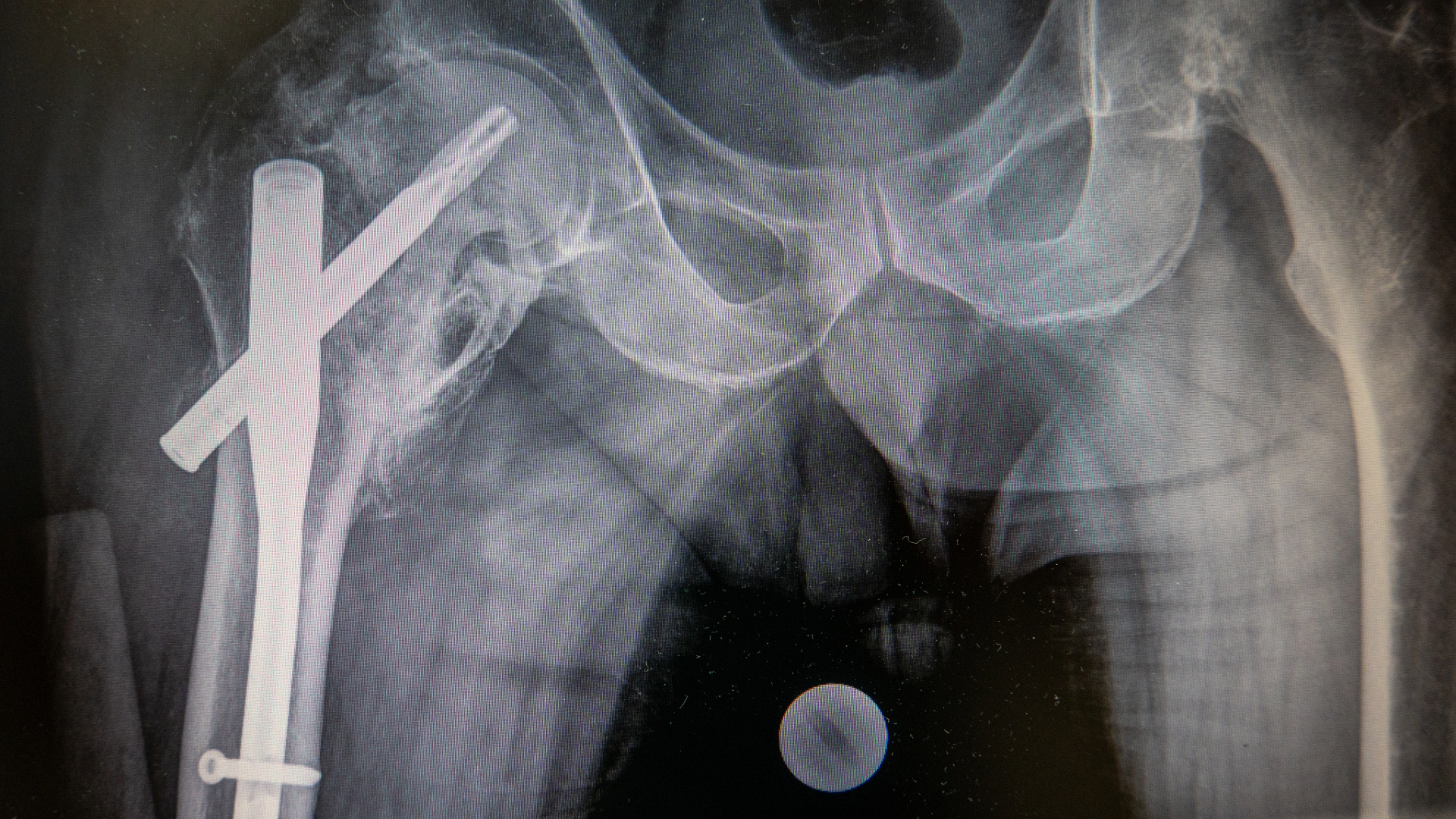
Ishac v Ontario (Health Insurance Plan) – Pectoral Implant Removal Not Covered by OHIP
In Ontario, the line between an insured health service and an elective cosmetic procedure can sometimes seem blurry. The Ontario Health Insurance Plan (OHIP) is

On April 2, 2025, the Ontario Superior Court of Justice dismissed the lawsuit of a 68 year-old hip replacement patient who alleged negligence against her treating orthopedic surgeon for inadequately addressing a purportedly more serious fracture which lead to the need for a revision surgery. The court, however, found that the subsidence of the first hip replacement was the result of the recognized complication of osteointegration failure, not negligence.
The patient was a 68-year-old woman who experienced a serious fall on Christmas morning in 2018, resulting in a hip injury. She was transported by ambulance to Thunder Bay Regional Health Sciences Centre, where X-rays confirmed a fracture in the right femoral neck of her femur. Initial assessment underestimated the extent of the fracture, which was later discovered to be more severe.
A medical resident, alongside Dr. Lochab, determined that the fracture was displaced, necessitating surgery. The patient consented to a partial hip replacement, which was performed by Dr. Lochab. During the operation, the fracture’s extent required an adjustment in the surgical approach, although the plan to use a Biomet Taperloc stem device remained unchanged. This uncemented prosthesis was designed for osteointegration, stabilizing through bone melding over several weeks.
To reinforce the femur, Dr. Lochab utilized small metal cables, to help reduce further fracturing or instability. Post-surgery, the patient’s initial recovery was promising, and she was discharged with standard hip replacement care instructions. However, in early January 2019, she began experiencing pain and a limp. A February follow-up revealed the prosthesis had subsided causing a leg length discrepancy. Consultations led to a second surgery, transitioning to a total hip replacement including a long stem modular system and a permanent shell in the acetabulum for receiving the new implant. This surgery was successful.
The dispute primarily revolved around the extent of the patient’s hip fracture during her initial surgery with Dr. Lochab on December 26, 2018.
The patient claimed that the fracture was more severe, extending below the calcar into the lesser trochanter, hence necessitating the use of three cables, and argued that this was inadequately addressed, leading to the failure of the implant. The plaintiffs experts support her position, testifying that an intertrochanteric fracture existed, which was not sufficiently repaired due to the shorter stem used initially.
Conversely, the defendant physician testified that the fracture did not extend beyond where the upper cable was placed above the lesser trochanter based on his direct observations and X-ray evidence during both surgeries. He argued the additional cables were prophylactic and not due to extensive fracturing. Both parties acknowledge that such implants fail in about 5% of cases, with Dr. Lochab suggesting that the patient fell into this unfortunate minority.
The parties differed significantly on the fracture’s extent, which impacted the perceived adequacy of the initial surgical response.
The court found that the defendant physician had provided credible evidence about the fracture’s location, which was supported by pre, intraoperative, and postoperative X-rays. The plaintiff’s experts’ disagreement on the fracture’s location was found to be a misunderstanding of it, leading the court to side with the defendant’s evidence.
As a result, the court concluded that Dr. Lochab met the standard of care required for the surgery and the discharge instructions provided to the patient. As such, there was no finding of negligence or breach of duty in the operation’s conduct or the postoperative care. The femur device’s subsidence was attributed to a known risk of osteointegration failure, not negligence.
The case was therefore dismissed with partial indemnity costs awarded to the defendant physician.
Decision Date: April 2, 2025
Jurisdiction: Ontario Superior Court of Justice

In Ontario, the line between an insured health service and an elective cosmetic procedure can sometimes seem blurry. The Ontario Health Insurance Plan (OHIP) is

On February 11, 2019, Bradley McKee stabbed his father, William McKee, to death. At the time of the stabbing, Bradley was 27 years old; he

On August 22, 2025, a judge of the Ontario Superior Court of Justice found emergency medicine physician Dr. Angela Cavanagh negligent for not referring a

On August 14, 2025, the Court of King’s Bench of Alberta found Dr. Mark Guhle liable for over $16,500,000 for medical malpractice leading to the